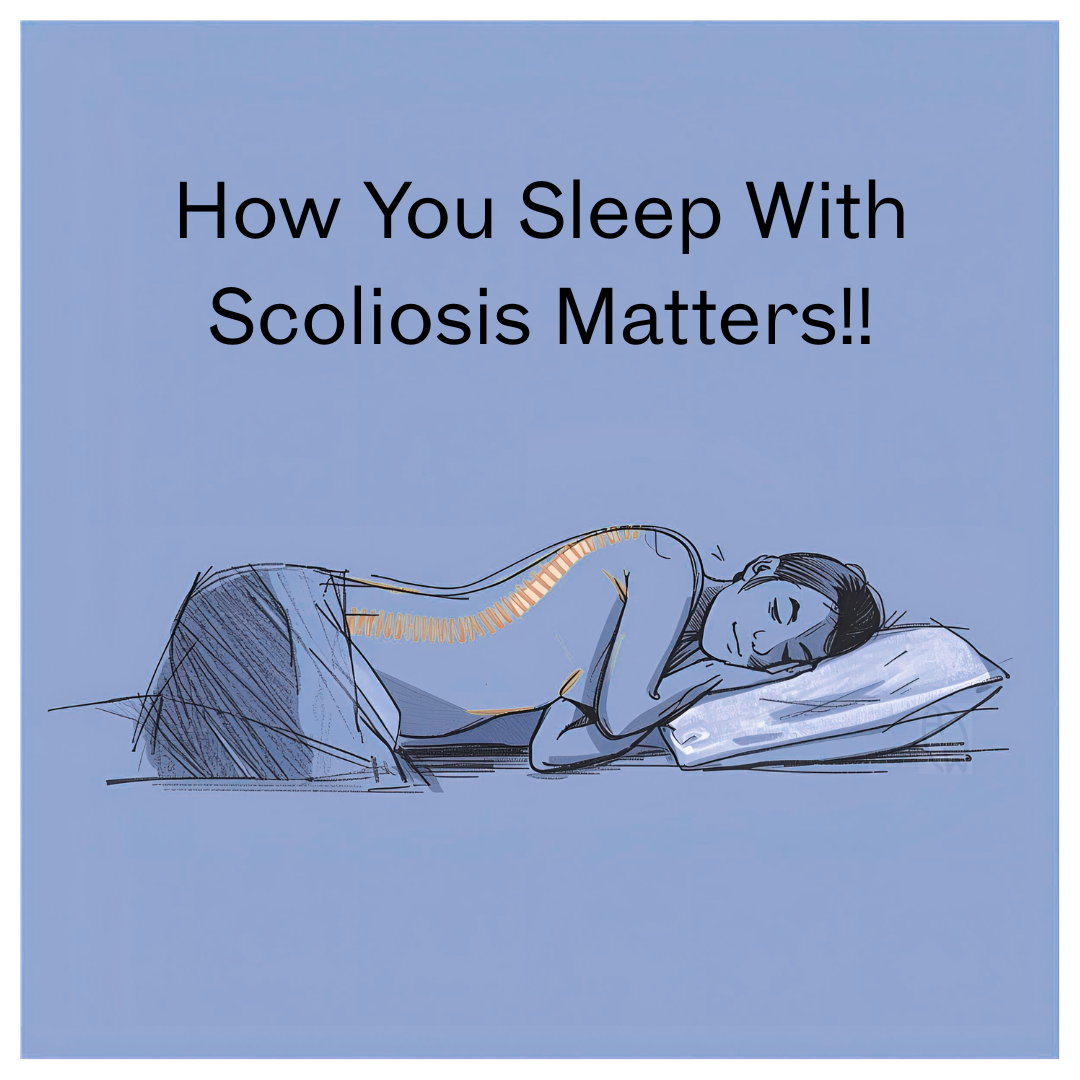
Scoliosis is more than just a curve in the spine. For many people, it also affects one of the body’s most important healing tools: sleep. Quality sleep is when your muscles repair, your spine decompresses, and your nervous system resets. But if you have scoliosis, finding a comfortable sleeping position can be a nightly challenge.
In this article, we’ll explore how scoliosis disrupts sleep, why it matters, and practical steps you can take to sleep better with scoliosis.
How Does Scoliosis Affect Sleep?
Scoliosis is a condition where the spine curves sideways, often in an “S” or “C” shape. These curves can cause:
• Uneven pressure on muscles and joints → leading to discomfort or pain when lying down.
• Compression of organs → depending on the curve, your lungs, heart, or digestive system may feel restricted in certain positions.
• Nerve irritation → pinched or stretched nerves may trigger tingling, numbness, or restless legs.
• Postural imbalances → making it harder to find a neutral, comfortable position in bed.
When these issues combine, many scoliosis patients struggle with insomnia, frequent waking, or waking up still feeling tired.
Best Sleeping Positions for Scoliosis
Not every sleeping position is equal when you have scoliosis. Here’s what to try:
Best Options
• On your back with a pillow under your knees → helps reduce lower back strain and keeps the spine aligned.
• On your side, sleeping into the concave curve → relieves pressure on the ribcage and helps your body settle into a more open position.
• With supportive pillows → a body pillow or wedge pillow can prevent twisting and help you stay in position.
Positions to Avoid
• Stomach sleeping → puts excess stress on the neck and lower back, often worsening discomfort.
• Twisted positions → following the natural curve of scoliosis while sleeping can reinforce bad alignment.
How a Scoliosis Brace Can Help Sleep
For many patients, nighttime bracing such as ScoliBrace® provides significant benefits.
• Keeps the spine supported when muscles relax at night
• Prevents the body from twisting further into its curve
• Gently guides the spine toward correction while you rest
• Reduces the risk of waking up in a “pretzel position”
Although it may feel uncomfortable at first, wearing a brace during sleep ensures that your body is healing and not worsening while you rest.
Tips for Sleeping Better With Scoliosis
1 Choose the right mattress and topper – medium-firm or memory foam can provide support and pressure relief.
2 Wear breathable sleepwear – soft cotton fabrics reduce skin irritation under a brace.
3 Keep your room cool – scoliosis braces can trap heat, so a fan or air conditioner helps.
4 Practice relaxation before bed – deep breathing or stretching can ease muscle tension.
5 Stay consistent – stick to the same routine and, if prescribed, wear your brace nightly for best results.
When to Seek Professional Help
If scoliosis is making it impossible to get restful sleep, consult a scoliosis specialist or chiropractor who understands postural correction. A proper X-ray with measurement (not just a generic scan) is essential to assess your curve and create a personalized care plan.
Final Thoughts
Scoliosis doesn’t just affect your posture during the day — it can seriously impact your quality of sleep at night. By choosing the right sleeping position, using supportive tools like pillows and braces, and working closely with a scoliosis professional, you can protect your spine and finally get the deep, restorative rest your body deserves.
Better sleep = better healing = a stronger future with scoliosis.